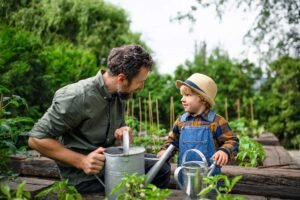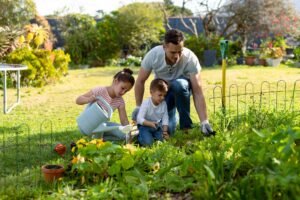Understanding Tree Pruning and Removal
Tree pruning and removal are fundamental aspects of maintaining a healthy and safe landscape. Pruning, which involves selectively trimming branches, offers several benefits that promote the overall health of the tree. Firstly, it encourages new growth by enhancing sunlight penetration and air circulation within the canopy. Additionally, pruning can significantly improve a tree’s appearance, shaping it to align with aesthetic and design preferences in landscaping. More importantly, regular pruning reduces the risk of diseases spreading by removing dead or diseased branches, which could present hazards to other vegetation and structures nearby.
Moreover, tree removal may sometimes be necessary, particularly in cases of tree disease, structural damage, or safety concerns. An unhealthy tree can pose a significant risk to property and human safety, especially if it is at a higher risk of falling or has branches that could break during storms. Recognizing key signs that indicate the need for urgent removal is essential. Indicators may include severe trunk damage, extensive leaf drop, and the presence of pests or fungi. When a tree displays these warning signs, it is advisable to consult a professional arborist to assess the situation.
Professional intervention is paramount for both tree pruning and removal processes. Certified arborists employ various methods to ensure that the tree care procedures are not only effective but also minimize disruption to the surrounding environment. Techniques such as crown reduction, crown cleaning, and deadwooding are employed during pruning, while safe removal techniques prioritize systematic dismantling and proper disposal of tree segments. By engaging professionals, property owners can ensure the longevity and health of their landscape while mitigating potential hazards.
Grading, Brush Removal, and Landscape Installations
Grading is a critical process in landscaping that involves adjusting the elevation of the ground to improve drainage and prevent erosion. Proper grading directs water flow away from structures, thereby minimizing the risks of foundation damage and landscape deterioration. Utilizing grading techniques, such as cut-and-fill or contour grading, helps ensure that any water runoff is efficiently managed. This procedure also prepares the land for subsequent landscaping activities, creating a stable foundation for long-term growth of plants and trees.
Brush removal is another essential aspect of property maintenance that significantly enhances both the functionality and appearance of outdoor spaces. Overgrown brush can harbor pests, create fire hazards, and obstruct views, thereby diminishing the overall aesthetic of a property. Clearing out these areas not only provides a cleaner, neater look but also promotes healthy growth of desirable plants by reducing competition for sunlight and nutrients. Employing specialized equipment and methods, professionals can quickly and efficiently remove brush while minimizing disruption to the surrounding environment.
Furthermore, landscape installations are key to transforming an outdoor space into an inviting and functional area that increases property value. This includes the strategic placement of plants, trees, and hardscaping elements, such as walkways, patios, and retaining walls. Such installations enhance the beauty of a property and create spaces for recreation and relaxation. Utilizing native plants can significantly contribute to sustainability, as they typically require less water and maintenance. Additionally, thoughtful design incorporates various textures and colors that complement the architecture of the home, resulting in a harmonious outdoor environment.
Incorporating grading, brush removal, and landscape installations creates a comprehensive approach to tree care and landscaping. Together, these services not only improve aesthetics but also foster a healthy and sustainable environment for both homeowners and their communities.















